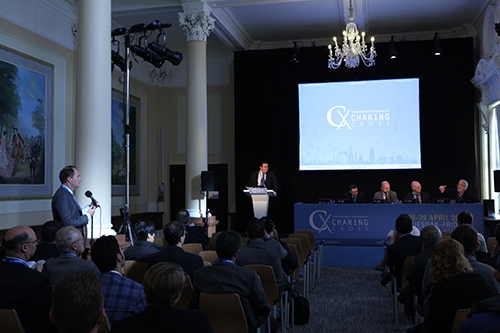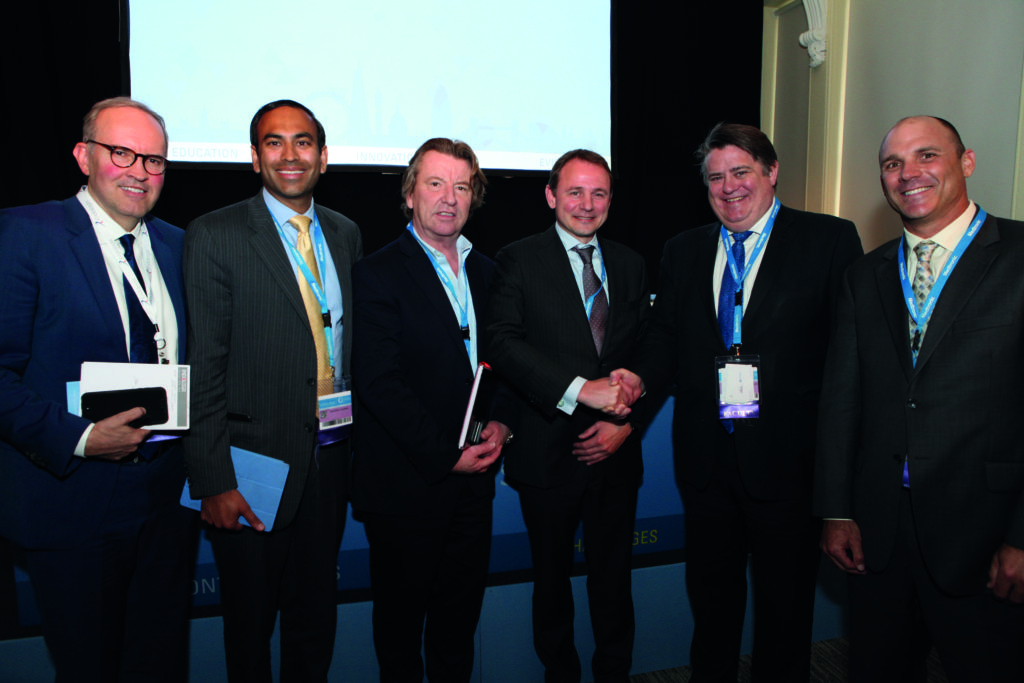
According to chair Stephen Greenhalgh, yesterday’s CX Innovation Showcase provided a “glimpse into the future” regarding emerging technologies that address current unmet therapeutic needs. The showcase, which Greenhalgh described as “action packed”, featured presentations on next-generation devices for thoracic aneurysms, abdominal aneurysms, and for peripheral arterial disease.
During a session dedicated to new approaches to managing thoracic aortic pathologies, Mårten Falkenberg (Gothenberg, Sweden) discussed the off-label-use of the Amplatzer vascular plug (St Jude Medical) to seal small chronic dissection entries in the aortic arch. He said: “The entry is catheterised from the false lumen side and the plug is positioned to anchor itself, as a sealing button, over the entry with the proximal disc in the true lumen and the remaining discs in the false lumen. In selected cases, this minimally invasive procedure can achieve false lumen thrombosis with aortic diameter reduction and may become an alternative to major surgical treatment with open arch replacement and frozen elephant trunks.”
Also during this session, Pierre Galvagni Silveira (Florianópolis, Brazil) presented the results of a study that evaluated the use of a thoracoabdominal branched endoprosthesis (Tambe, Gore) for the management of Crawford type III & IV and Safi type V thoracoabdominal aneurysms and abdominal aneurysms that are involved in the renal arteries. According to data for the first three patients treated with device, he reported, Tambe demonstrates “safety and efficacy in the exclusion of aneurysm sac and the preservation of visceral and renal arteries.” Galvagni Silveira concluded: “The Tambe device is the only ‘all in one’ pre-cannulated off-the-shelf system, including an aortic component and side branch stent graft. The initial results (one-year follow-up) are promising, but longer term outcomes are needed to confirm this early experience.”
Speaking at the abdominal aortic session, Benjamin Starnes (Seattle, United States) described the first-in-man use of patient-specific, 3D-printed aortic templates to optimise the modification of endografts for fenestrated endovascular aneurysm repair (FEVAR) procedures. He explained that novel fenestration-alignment software (AortaFit, Aortica Corporation), using data from a contrast-enhanced computed tomography (CT) scan, is used to design the 3D template, which (once printed) is then slid over a partially exposed endograft and the required fenestrations are marked out. Starnes commented, on the basis of the initial first-in-man data, that “the use of fenestration alignment software and the associated 3D printed aortic template provide an efficient and accurate way to identify fenestration locations.” He added that, at present, the software had only been used to create templates for physician-modified endografts “but ultimately, it is intended for use in the direct manufacture of patient-specific endografts”.
Blandine Maurel (London, United Kingdom) also presented data for novel software that could be used to optimise treatment for aortic aneurysms. She talked about the use of Cydar endovascular software (Cydar) to create fusion images, commenting: “The software, using secure cloud data, is used to deduce the patient position by automatically comparing vertebrae visible on X-ray to that on CT angiography. In three to eight seconds, an updated overlay is projected and a 3D vascular mask is created.” The advantages of the software, according to Mandel, include that it is suitable for use in any theatre, it is radiation and contrast free for the overlay registration, and that it is “fully automated and, thus, user friendly for the operator—avoiding any additional user input.” Maurel and her colleagues are conducting a trial “to assess the impact of its use in routine practice on contrast and radiation dose during infra-renal EVAR compared with historical experience”.
In the peripheral session, Jean-Paul de Vries (Nieuwegein, The Netherlands) reported outcomes for the use of endovascular aneurysm sealing (EVAS; Nellix, Endologix) for the management of common iliac artery aneurysms. He commented, based on initial cases, “In concomitant common iliac artery aneurysms, we do not need additional stenting (flow lumen <3.5cm) and no stents are required in the internal/external iliac artery (reducing the risk of obstruction). But if you do need to extend into the external iliac artery, there is no embolisation of the internal iliac artery itself. Overall, the short term results are very encouraging.” He added that there was a low rate of endoleaks and that the incidence of graft obstruction “was at least similar” to that of iliiac branched devices or parallel grafts.
One-hand suturing device survives Dragon’s fire

From left to right: Dragons Bob Mitchell (Endologix), Daveen Chopra (Medtronic) and Chas Taylor (medical device entrepeneur), with the winner of Dragons’ Den 2016 Mar Vrancken Peeters, course director Stephen Greenhalgh and dragon Jason Field (Gore)
Mark Vrancken Peeters (Nijmegen, The Netherlands) has won the 2016 Dragons’ Den competition for his Switch suturing device, which can be held in one hand. Calling the prize a “great recognition” for his and his colleagues’ work, he told CX Daily News that he intends to use the £1,000 prize money to help put the device into the hand of the vascular surgeon “as fast as possible”. With the device, Vrancken Peeters explained, the needle is always secured into one of two jaws and the surgeon can transfer it “in a linear way” from one jaw to another “so, you no longer have to—as with classical suturing—transfer the needle from hand to another.”
He added that the device enables surgeons to be more precise and to be faster. “Now, you can perform your vascular anastomoses in about half the time compared with traditional suturing. This is, of course, very advantageous because in vascular surgery, the arteries are cross clamped and, during this time, deprived from oxygenated blood. Therefore, we should keep this period as short as possible,” Vrancken Peeters commented.
An “honourable mention” was given to Johann Christof Ragg (Berlin, Germany) for his biomatrix sclerofoam for endovenous and interventional therapy. Congratulating Ragg and all of those who took part in the Dragons’ Den, chair Stephen Greenhalgh said: “It takes real guts to put your heart and soul into something”. Previous winner David King (Chelmsford, Essex) said winning Dragons’ Den two years ago was like “a fairy tale”. He explained that his device, thanks in part to the prize money, was nearing the manufacturing stage.







